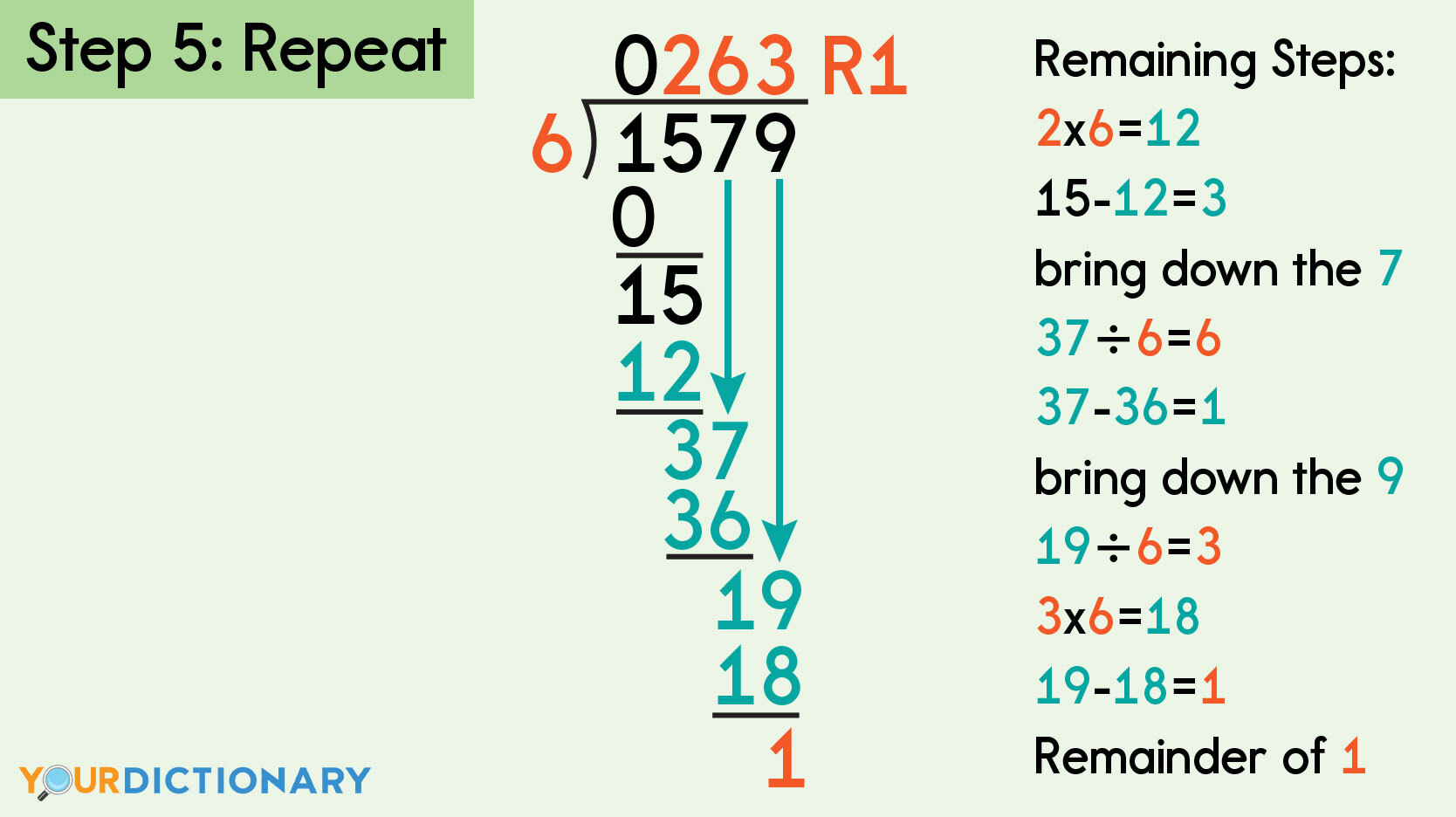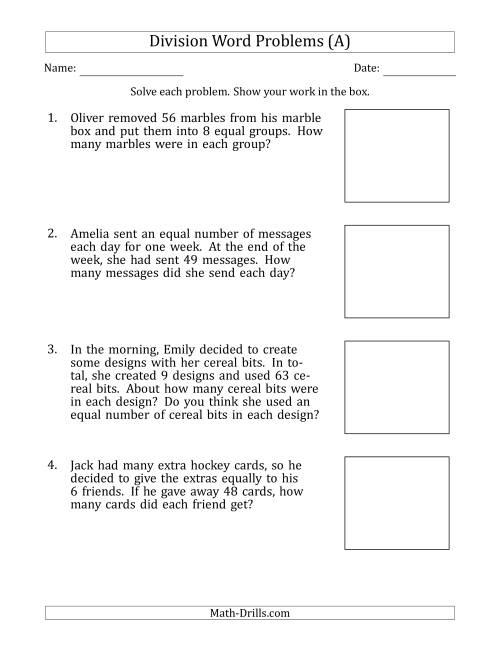

We multiply 8×5 to give us 40, and take that 40 away from the 42, leaving us with 2. Section 4: 5 goes into 42 eight times, so we write an 8 on top of the grid.We carry that 4 over to the tens place of the next section, giving us 42 in the final section. Section 3: 5 does not go into 4, so we write a 0 on top, multiply 0x5 to make 0, and take that 0 away from the 4.We carried that 0 over to the tens place of the next section. We multiplied 3×5 to make 15 and took that 15 away from the 15, leaving us with 0. Section 2: We know that 5 goes into 15 three times, so we wrote a 3 on top.We carried that 1 over to the tens place of the next section. We multiplied 1×5 to make 5, and took that 5 away from the 6, leaving us with a 1. Section 1: First we knew that 5 goes into 6 one time, so we wrote a 1 on top.Here are the steps that we followed to solve this equation: Notice that when we have more digits in our dividend, we simply extend our grid. It also has more digits that our last example. This time we will try an example that has a remainder. To find the final quotient, we simply list the digits from the top of the grid: 1, 6, 2. We are left with 0, which means that we have no remainder. Now we multiply 2×2 to make 4, and take that 4 away from the 4. Now we ask ourselves, “How many times does 2 go into 4?” It goes 2 times, so we write a 2 on top of our grid. This doesn’t affect that number, so we still have 4 in the next section. We carry that 0 over to the tens place of the next section on the grid. Now we multiply 6×2 to make 12, and take that 12 away from 12. Now we ask ourselves, “How many times does 2 go into 12?” The answer is 6, so we write a 6 on top of the grid. Now we bring that 1 over to the tens place of the next section on the grid. We now multiply 1×2 to make 2, and take that 2 away from the 3. Now we ask ourselves, “How many times can 2 go into 3?” The answer is 1, so we write a 1 on top of the grid. We write the digits from 324 inside the grid, and we write our divisor (2) on the left side.

For this equation, our grid will have 3 sections. The number of sections in the grid depends on the number of digits in our dividend. Suppose that we want to solve the equation 324÷2.įirst we draw a grid.
HOW DO YOU DO DIVISION PROBLEMS HOW TO
Let’s learn how to perform the Grid Method for long division!īelow, I have included both a video tutorial and step-by-step instructions. If you are looking for a mental math approach to long division, be sure to check out my posts for the Box/Area Method and Partial Quotients. The Grid Method is not a mental math based approach. This makes traditional long division easier for some students. It follows the same steps as traditional long division, but uses a different method of organization. The Grid Method is intended for those who plan to teach traditional long division. The Grid method is one of these strategies. Luckily, there are strategies that we can teach to make multi-digit division easier to understand and perform. We write the remainder after an "r" in the answer.ĭivision is the Opposite of MultiplicationĪnother way to think of division is as the opposite of multiplication.Long division is often considered one of the most challenging topics to teach. That is 18.ġ8 divided by 3 = 6, but there are still some leftovers. You pick the closest number that 3 divides into that is smaller than 20. The closest numbers to 20 that 3 can divide into are 18 and 21. If the answer to a division problem is not a whole number, the "leftovers" are called the remainder.įor example, if you were to try and divide 20 by 3 you would discover that 3 does not divide evenly into 20. The answer to this question is undefined.ģ) Dividend equals Divisor: If the dividend and the divisor are the same number (and not 0), then the answer is always 1. In other words, if the divisor is 1 then the quotient equals the dividend.Ģ) Dividing by 0: You cannot divide a number by 0. There are three special cases to consider when dividing.ġ) Dividing by 1: When dividing something by 1, the answer is the original number. Divisor - The divisor is the number you are dividing by.Dividend - The dividend is the number you are dividing up.The three main names are the dividend, the divisor, and the quotient. This is also called a fraction.Įach part of a division equation has a name. Sometimes people will write one number on top of another with a line between them. The most common one is ÷, but the backslash / is also used. There are a number of signs that people may use to indicate division. If you take 20 things and put them into four equal sized groups, there will be 5 things in each group. Division is breaking a number up into an equal number of parts.


 0 kommentar(er)
0 kommentar(er)
